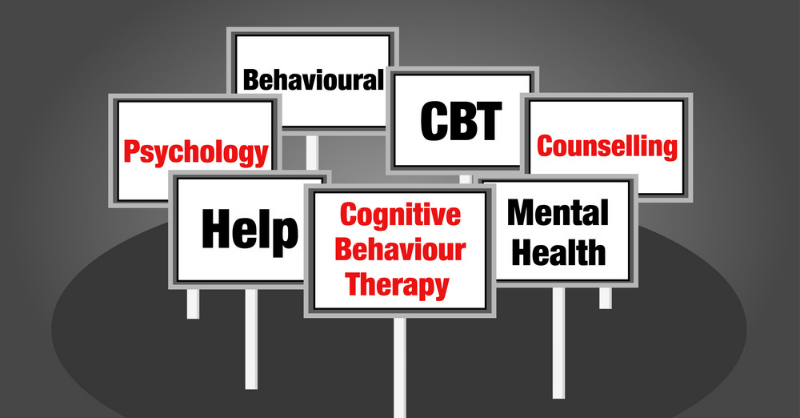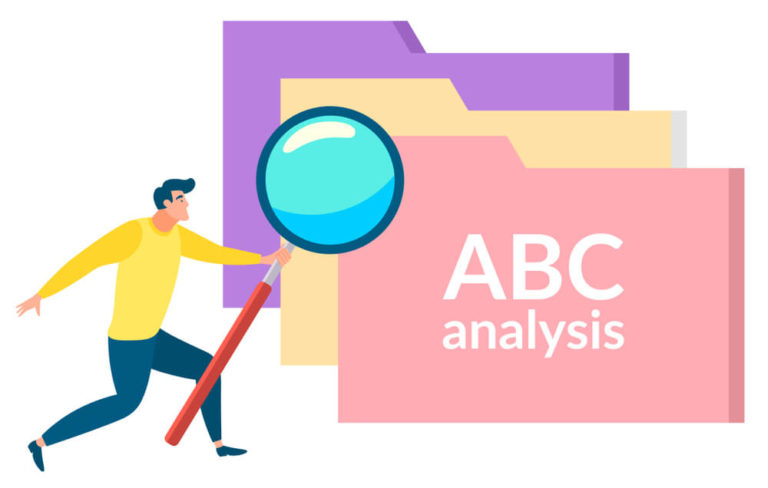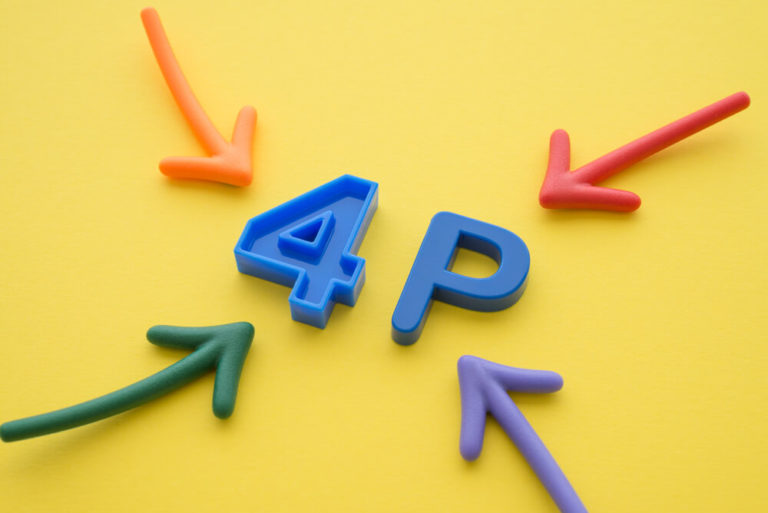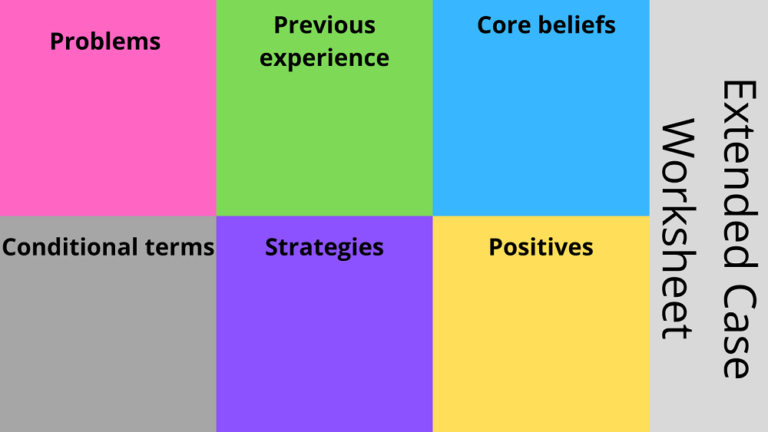
Cognitive behavioural therapy, often called CBT techniques, is a form of psychological treatment. It is a widely acclaimed talk therapy. CBT techniques can help you solve the challenges that you face regarding mental health. It also helps you control and overcome negative thinking.
In this blog, you will get an in-depth understanding of 25 CBT techniques and worksheets. In addition, you will also learn how you can acquire benefits by using them. If you are a therapist or a patient, this blog is especially helpful for you.
Table of Contents
What can CBT Techniques Help with?
Cognitive behavioural therapy treats a wide range of problems. They are the following:
- Depression and frustration
- Acute mental illnesses like schizophrenia
- Mental anxiety and stress
- Obsessive-compulsive disorder (OCD)
- Post-traumatic stress
- Eating habit disorders
- Relationship failure
- Sleep disorders like Insomnia
- Sexual disorders
- Alcohol and drug consumption-related issues
- Different kinds of phobias

CBT techniques can fully or partially treat the above disorders. However, patients may have to combine the therapy with prescribed medications as per the doctor’s recommendation.
What may cause a Cognitive Disorder?
Cognitive behavioural disorders can be outcomes of various factors, like most other mental health problems. For example, it can root in hormonal imbalances or in other genetic predispositions.
Secondly, it can arise from environmental factors too. For example, a common lifestyle factor behind cognitive disorders is the lack of proper diet and nutrients. Another environmental factor is the lack of interaction in human development stages, particularly during early childhood. Thirdly, physical abuse and injury can lead to such challenges. Additionally, excessive use of drugs and alcohol can result in cognitive disorder.
What are the Cognitive Symptoms?
You can diagnose cognitive disorders by studying the related symptoms. Examples of some common symptoms are as follows:
- Short or long time memory loss
- Identity crisis
- Irrational thoughts
- Confusion
- Compulsive and impulsive decision-making patterns
- Impaired judgement
- False blaming
- A compulsive need for controlling situations and people in the surroundings
All these symptoms can be signs of cognitive disorders.
25 CBT Techniques and Worksheets for Cognitive Behavioural Therapy
CBT techniques can be life-saving for you if you are suffering from mental issues. The primary goal of CBT techniques is to teach you ways to fight your negative thoughts. Alongside, it also equips you with the techniques and confidence to deal with stressful situations. 25 such CBT Techniques are given below:
1. Identify Cognitive Distortions
The first thing you can do is to identify your problem. Only the proper identification of your problem can give you the exact solution. Therefore, you can take a more direct route by taking the help of an expert psychologist or therapist.

They can help you to assess your problems. Meanwhile, the extent of your challenge needs to be gauged. And once your therapist learns about how deep-rooted your condition is, the treatment process can kick off instantly.
2. Identifying the Root of Disorder
After you have identified your problem, you will have to find out the root of your disorder. In other words, try finding the answers to these questions.
- How did you start to believe in something?
- From when did you start such thinking?
The answers might give you the essential clues to solve the hardships that are troubling you.
 Once you know your own biases and triggers, you will be able to challenge them. Sometimes, past experiences that we barely remember can affect us very strongly too. Therefore, identifying the root is vital for treating your disorder. And you can do that by searching the realm of your mind and looking into your experiences. Getting professional help for doing so can be particularly helpful.
Once you know your own biases and triggers, you will be able to challenge them. Sometimes, past experiences that we barely remember can affect us very strongly too. Therefore, identifying the root is vital for treating your disorder. And you can do that by searching the realm of your mind and looking into your experiences. Getting professional help for doing so can be particularly helpful.
Enrol Now: Cognitive Behavioural and Occupational Therapy Online Course
3. Validating Your Thought
This method is one of the CBT techniques that can help you if you are confused with your thoughts. The technique is called validating your thoughts. For doing this, you have to record your thinking process.
Firstly, it involves collecting evidence for and against a certain thought of yours. The second step is evaluating the evidence to conclude if your thought is valid or not. Finally, depending on the previous step, you get insights into how rational your thoughts might be. If your own thought process seems relatively less reasonable to you, you can do something to overcome them. ‘

For example, you may have an assumption that “My friend doesn’t like me any more.” In this thought recording process, record evidence for this idea. For instance, “He didn’t pick up my phone calls the last time I called…” or “George cancelled our plans at the eleventh hour…”. In contrast, collect evidence against this assumption. For example, “George called me back after not answering the call,” and “He invited me to his house on Monday. If he doesn’t like me any more, he probably wouldn’t have invited me home.”
Afterwards, you can balance both sets of clues. In the case of the mentioned example, you could conclude that “He must have been busy when he didn’t pick up my calls or cancelled the plan. Also, he still likes me”. Thus, validating your thoughts help you deal methodically with spiralling worries.
4. Reframe Your Negative Thoughts
Reframing negative thoughts is useful if you encounter negative emotions whenever you see something. The thought reframing method is used to counter the negative feeling by noticing the day-to-day things that you feel positive about. For example, you might be eating a buffet meal in a restaurant, and thinking “I hate their soup”. This is initially a negative thought.

Next, to reframe this negative thought, push yourself to notice three other dishes in the buffet menu that you like in that restaurant. Thus, you can replace your negative thoughts with good ones.
5. Interoceptive Exposure Exercise
Interoceptive Exposure Exercises are intended to help with panic attacks and anxiety. In this method, you will expose yourself to bodily sensations that you fear. An example is the sensation of shortness of breath despite being physically fit. For treating the problem, you have to do deliberate hyperventilation. That means you have to breathe rapidly for a certain period whenever you feel like not getting enough air into your lungs.

In such circumstances, you may think that you are not being able to think clearly. When that happens, look into the mirror for an extended time. Also, according to this CBT technique, you should drink a hot cup of coffee and calm your nerves if you are losing control over yourself.
6. Exposure to Your Fear
This method is one of the most helpful CBT techniques. Especially if you have obsessive-compulsive disorder (OCD), this method can be very effective for you. In this method, you have to face the things you hate to deal with.

Suppose that you hate dirt or dust. So, for treating this, you will have to touch the dust and moderate your reaction. Likewise, you might have a fear of big roadside trees falling out on your head while walking on the road. Therefore, walk on the road under the big trees and prevent your natural responses to treat your anxiety. By doing this, you will be able to conquer your fear.
7. Nightmare Exposure and Scripting Your Dreams
The nightmare exposure technique is for those who are struggling to deal with nightmares. This technique is similar to the method explained above. However, in this method, you will deal with scary dreams and emotions that arise from such dreams.

Firstly, when the emotion arises, you will have to work together to identify the emotion. Secondly, you will script your dreams into a new image. Thirdly, make a proactive effort to understand that dreams are dreams. Also, telling yourself that the same nightmare is not going to happen in real life can be a helpful reinforcement.
8. Noting Down Thoughts
Noting down thoughts is a way you can assemble your mood and thinking. For doing this, write down the following things on a piece of paper:
- Your thoughts,
- The source of such thoughts,
- How long you felt them,
- How you reacted to certain situations etc.
This CBT technique can help you to identify your thinking and emotional patterns and define them.

In this writing exercise, you will have to list negative thoughts that come to you. In addition, keep track of the new thoughts and behaviours, which may help you change or cope with them better.
9. Picture the Best Parts of Your Day
When you are feeling sad or frustrated, it is hard to recognise the positive aspects of life. However, Alice Morse Earle rightfully said, “Every day may not be good, but there’s something good in every day.” As the quote says, your whole day might not go well, but even if a part of it is good, focus on that.
 Therefore, when you feel down, this simple technique of focusing on the best parts of your day can lessen your negative feelings. Consequently, the positive emotions in your day will be more impactful. For example- you might have a heated argument with your colleague in the morning. On the other hand, your boss might have praised you for your hard work in the evening. So, visualise the evening moments when your hard work has been appreciated.
Therefore, when you feel down, this simple technique of focusing on the best parts of your day can lessen your negative feelings. Consequently, the positive emotions in your day will be more impactful. For example- you might have a heated argument with your colleague in the morning. On the other hand, your boss might have praised you for your hard work in the evening. So, visualise the evening moments when your hard work has been appreciated.
10. Welcoming the Worst
Welcoming the worst is a practical and realistic technique. According to the CBT technique, you have to imagine the worst scenario in your life. Then, think about how the worst outcomes may affect you.

For example, if you fear divorce, think about what will happen if this takes place in reality. Playing this scenario in your mind can help you recognise that even if your spouse leaves you, the situation will be manageable. And, your spiralling worries about divorce will eventually calm down.
Patients who are very vulnerable to bad outcomes might want to practice this. And besides someone dealing with these issues, any other person can get benefits following this technique.
11. Muscle Relaxation Method
The next one is progressive muscle relaxation. This method is familiar to those who practice mindfulness exercises. Generally, muscle relaxation helps calm your nerves and treat your inattentive mind.
This technique helps you relax your muscles slowly until your whole body goes to a state of relaxation. For doing this, you may use audio instructions, YouTube videos, or just run the guiding commentaries in your mind.
Enrol Now: Cognitive Behavioural and Occupational Therapy Online Course
12. Breathing Exercise
Breathing exercises can help patients suffering from mild mental illnesses, severe anxiety, long-term depression, compulsive disorder, or panic attack. Using this method, you can bring regularity to your breathing and improve your overall health.
The best thing about these exercises is that you can do them without the guidance of a doctor.
13. Experimental Method
Do you have irrational thoughts? If so, can you confirm if they have any strong reason behind them? By actively thinking this, you can be the own judge of how reasonable your thoughts are. You can call this exercise an experimental method. The experiment method is more like scientific hypothesis testing.

Suppose you are weak in maths. And, you might have an idea that you can never get an A grade in Mathematics. Now, what if you start with exercising maths for 2 hours every day. After doing that for a month, do you still tell yourself that “I can never get an A grade in maths”? Hopefully no. So, using the experimental technique, you will not only be able to eradicate your negative thought but also achieve the goals that are particularly hard for you.
14. Survey Technique
The survey method has similarities with the experimental method. In short, it is all about asking others about their experiences who are in a similar situation.

It will help you understand the extent of rationality in your thoughts. Using this technique, you can ask others to evaluate if your thoughts are realistic.
15. Replace the “Should” and “Shouldn’t”
If you are confined in a series of “should” and “shouldn’t” sentences, they can create a set of silent rules to your behaviour that might have no sense to others. Moreover, these should statements are making you judgemental about yourself and others.
For example, people will assume that you are dominating and manipulating if you say, “You should do this”, and distance themselves from you. Similarly, being too strict with yourself has a high chance of disrupting your relationship with yourself.

Furthermore, when your “should” expectations are not be fulfilled, it is likely to upset you. Therefore, you can replace “should” with some positive words, like- “It would be great if I exercise every day.”.
16. Questioning Technique
The next technique is especially helpful for people who engage in critical thinking. Questioning your cognitive distortions might be useful. For instance, you might have tagged yourself as ugly, a loser, dumb, unlucky, or abnormal as a result of your biases.

You can start questioning your thoughts. The results will be surprising. For example, what does it mean to think of yourself as a “loser”? Why are you a loser? What couldn’t you achieve? Can everybody else achieve it? The more questions you ask, the more you realise the highly negative impacts of such tags.
17. Successive Approximation
This technique is not as hard as it’s sounding. You just have to break up your large tasks into small pieces. Naturally, it can be hard to face a massive goal, like reducing 10 kg weight. However, you can plan to lose 1 kg every month, and exercise and follow a regular diet to do so. And easily, the goal turns out to be significantly achievable.
Also, by cutting goals into small steps, you can relax, overcome tension and anxiety, and achieve mental happiness.
18. Mindfulness Meditation
Mindfulness meditation has many positive impacts. This method is one of the CBT techniques therapists suggest. It can help people suffering from harmful and self-destructive thinking and acute obsession. Moreover, it treats frustration, depression, any kind of addiction, and other mental problems. After practising mindfulness, the patient stays firm in a situation of breakdown.

Mindful meditation techniques vary. In general, it involves deep breathing exercises and awareness of the entire body and mind. You don’t need to take much preparation for practising mindfulness. You only need a comfortable place to practise and 5-10 minutes of free time.
19. Activity Scheduling Technique
This CBT technique is especially useful if you are suffering from depression. It is all about planning and scheduling fun events in the near future that you will be looking forward to.

For instance, on a specific day of every week, you may plan and note down to engage yourself in your favourite activities throughout the upcoming week. This can involve simple yet pleasant activities. For example, you can watch a newly released film or hang out with friends. However, it should be something that makes you excited. Don’t schedule events that end up making you anxious instead of relaxed.
20. Release Energy on Imagination
This CBT technique involves instantly releasing strong negative energy and emotions by imagining a situation.

For example, you get involved in a fight with your spouse, and they told you something cumbersome. In this technique, you can bring those moments to your imagination in detail. After that, you will; have to label the feelings and thoughts (to scream, to cry, to divorce your spouse, etc.) you experienced during that time.
In fact, imagining those negative feelings for an extended period of time can help you to get rid of them. Because when you release negative energy in imagination, it lessens your urge to do it in real. Also, you don’t have to bear any outcome of your problems in reality.
21. Antecedent-Behaviour-Consequence (ABC) Worksheet
ABC worksheet analysis is one of the popular CBT worksheet techniques. This functional analysis helps you to learn about yourself. It explores what leads you to specific behaviours and what consequences result from those of your behaviours.
1. Antecedent (A): On one side of the worksheet, there is a box labelled “Antecedents”. In this box, you have to write down the factors pushing you to a particular behaviour, directly or indirectly.
2. Behaviour (B): In the centre of the worksheet, you will find a box labelled “Behaviours.” In this part, you note down the certain behaviours you want to make an analysis.

3. Consequence (C): On the other side, there is a labelled box named “Consequences.” You will have to write down the result of your behaviour under consideration. Write down both positive and negative behaviour as consequences.
Enrol Now: Cognitive Behavioural and Occupational Therapy Online Course
22. Grading on Worksheet
This method is quite simple. It’s an easy worksheet that may open new ways for overcoming social anxiety. In this worksheet, you will have to list situations that you would usually avoid. That means to rank a hierarchy of your social anxiety. For instance, you may typically avoid making a phone call or making eye contact while conversing.

Afterwards, you have to grade each component on how vulnerable you think you are if you have to do it, on a scale from 0 to 10. For anyone suffering from social interaction fear, eye contact may be rated a 6 to 7 on the scale, while making a phone call might be rated around 4 or 5.
After you are done with the grading process, you can rank them according to their vulnerability rating. This may help you assess your greatest social anxiety. Afterwards, you may work on the anxieties.
23. Case Formulation Worksheet
Case formulation worksheet works with 4-P factors. They are:
- Predisposing Factors- Predisposing factors can be your genetics, family history, socioeconomic status, personality, intelligence, life events, or temperament. Basically, these external or internal factors can increase the probability of you developing a perceived problem. Thus, the factors make you vulnerable to disorders.
- Precipitating Factors- Precipitation factors are known as the “triggers”. Generally, they are events or situations that help the development of a disorder. For instance, these factors can be divorce, loss of friendship, death of a loved one, etc.
- Perpetuating Factors- Perpetuating factors are circumstances that make you ill regularly or situations that are continuously occurring over a period of time. For example, malnutrition, irregular sleep schedules, habitual use of drugs, bullying can be perpetual factors.
- Protective Factors- Protective factors can be your strength and assets. These factors help you to determine the eventual outcome. For example, early diagnosis of disease, strong support from family, regular exercises, etc., are protective factors.

Analysing these 4-P factors in a worksheet can help you deal with cognitive difficulties.
24. Extended Case-worksheet
In this worksheet, you connect the dots between your core beliefs, thought patterns, and present behaviour.

This worksheet has six boxes on the left of the sheet, which have to be completed before going on to the right-hand side of the case sheet. You can label the boxes as-
- Problem
- Previous experience
- Core beliefs
- Conditional terms
- Strategies
- Positives
Fill up the boxes one by one. It will help you to solve your problems based on your experiences, inner beliefs and own rules. Finally, you will make your self-strategy and bring out positive outcomes from your problems.
25. Strategy Worksheet
This worksheet instructs you to create a category of any current cognitive behaviour. Firstly, you may title those behaviours as “Problems”. Secondly, write down the reasons behind the problems. Once you have identified the source of your problems and understand why you are suffering from them, you may plan strategies to shield the problems.

Thirdly, you will have to write down the effectiveness of your strategies, such as how long they may take and the pros and cons of each strategy.
Finally, you will have to plan alternative actions. There is a significant chance that your strategies against the problems may not work. So, you have to formulate other strategies that may work instead. Thus, this strategy worksheet makes you prepared for facing all the problems.
Pro Tip: If you have a cognitive disorder, or you are a therapist/doctor, you may consider joining “Cognitive Behaviour Therapy (CBT)- Advanced Diploma”. This online course will help you to learn more about CBT techniques as well as overall mental health.
What are the Benefits of CBT Techniques?
The benefits of the CBT technique are many. A few of them are listed below:

1. CBT techniques are simple yet effective.
2. In many cases, medicine alone can’t cure a disorder. Therefore, combining medication with CBT fasten the process of mental improvement.
3. CBT techniques don’t require a long time of period to be completed. However, it shows its effectiveness fast.
4. CBT techniques can be provided in different forms.
5. You don’t need any heavy instruments. You can get results only by using simple elements. Some examples are worksheets, books, apps, your smartphone or simply your mind.
6. It provides you with lessons that can be used in regular life, even after your treatment.
7. Anyone can also benefit from learning, CBT techniques, irrespective of how sick or healthy they feel.
What are the Side Effects of CBT Techniques?
CBT techniques don’t have significant side effects. However, you may cry, get angry or be sad while some therapy sessions. Moreover, some sort of CBT techniques like exposure to fear may create temporary stress or anxiety. But you will win over the problem with time. Finally, you will have to be committed to the techniques and consult your therapists at a regular interval.
Conclusions
CBT techniques can help improve your mental health. Your mental health is important because it can affect you physically. Mental disorders can increase your risk for stroke, obesity, diabetes, and heart disease. Therefore, there is no room to neglect it. To learn more about mental health and cognitive behavioural therapy, click here!
Read more on our blog
- The Early Years Foundation Stage (EYFS)
- Sports First Aid | Everything You Need To Know
- Lots of Likes on Instagram: How You Can Quickly Increase Popularity
- Why You Should Use Photo Background Removers For Mobile Devices
- Maximizing ROI: 11 Strategies For Efficient Advertising Spend
- How to Keep Your Data Safe While Applying for Jobs: 6 Tips
- Take Mac Classes to Transform Your Design Profession
- Exploring the landscape of e-commerce hosting
- Personal Branding For Executives: 7 Tips For Maximum Impact
- Transformative Technologies in Senior Living Homes: A Glimpse into 2024
- Available Courses
- Career Bundles72
- Animal care5
- Law8
- Quality Licence Scheme Endorsed111
- Teaching13
- Teaching & Academics Primary27
- Accounting & Finance Primary30
- Training3
- Design9
- IT & Software44
- Healthcare126
- Marketing31
- Health and Safety402
- Construction48
- Electronics25
- Hospitality22
- Health and Social Care219
- Child Psychology37
- Management375
- Business Skills268
- First Aid70
- Employability264
- Safeguarding75
- Food Hygiene103
- Personal Development1277
 Food Hygiene
Food Hygiene Health & Safety
Health & Safety Safeguarding
Safeguarding First Aid
First Aid Business Skills
Business Skills Personal Development
Personal Development







